
Lyon and its surroundings
Lyon, the regional capital, located at the meeting point of the Rhône and Saône rivers, is a leading destination in Auvergne-Rhône-Alpes thanks to its multiple attractions. Lyon is a rich inheritor of the past and a resolutely forward-looking city with a legendary way of life.
A gastronomic city of international renown, Lyon is reputed especially for its bouchons, traditional cuisine, starred restaurants and well-known chefs. Exceptional talents keep the memory of Paul Bocuse alive. A city of art and history, the cradle of cinema, Lyon is also home to the Confluence Museum and the Lumière Institute. From the old city centre, 2000 years of history listed as a UNESCO World Heritage Site, to the innovative Confluence district, visitors travel through time.
At the crossroads of the terroirs, Lyon is an open door to Dombes, Beaujolais and Vienne-Condrieu, a gourmet and cultural city offering a multitude of experiences.
Major events
Key people
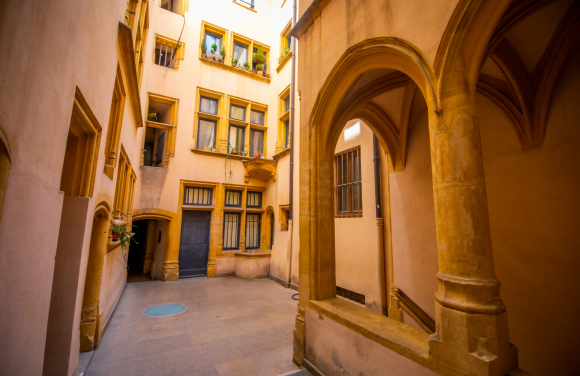





In the heart of the historic centre
A European commercial crossroads during the Renaissance, Vieux Lyon continues to be a place of constant activity. Shops, cafés, restaurants, craftspeople and designers have replaced the businesses of the past. With its network of narrow streets lined by the famous traboules (passages between the inner courtyards of buildings), this old district is a pedestrian paradise.
Inserted between the Fourvière hill dominated by its imposing Basilica, the slopes of the Croix Rousse and the classical monuments of the peninsula, this district and its surroundings form an exceptional urban ensemble recognised as World Heritage by UNESCO for its diversity.





Lyon gastronomy
Surrounded by rich and abundant lands, the city of Lyon has always been famous for its good food. The generous cuisine of the "Mères lyonnaises" originates from the irreplaceable "Bouchons" and the outstanding restaurant La Mère Brazier perpetuates the memory.
Since then, several starred chefs have confirmed Lyon's gastronomic reputation. More than 80 years ago, the city was named "capital of gastronomy" by the famous literary critic Curnonsky, and it has managed to maintain its rank. Lyon's sausage, quenelles, "Cervelles de Canut" (a base of fromage blanc seasoned with herbs abd garlic known as “silkworker’s brains”) or praline pie make it famous.
With Paul Bocuse's iconic figure as a backdrop, the Bocuse houses, brasseries and gourmet restaurants enjoy a legendary reputation. Les Halles de Lyon - Paul Bocuse, a showcase of specialities and talents, is an excellent reference to this outstanding chef.
Lyon's gastronomy is to be tasted and told. A guided tour reveals its secrets.
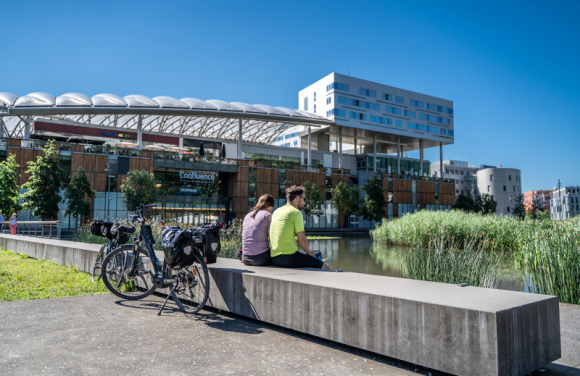


The Confluence, a district facing the future
The Confluence is the meeting point of the Saône and the Rhône. A symbolic district of contemporary renewal, Confluence has brought together the great names in international architecture.
The Musée des Confluences, a museum of natural history, anthropology, societies and civilisations, was built in this area. A unique place of wonder that raises questions through its collections and its original architecture.
The layout of the quays of the Saône forms a space conducive to strolling. Everywhere, audacious urban planning reveals a different face of the Rhône-Alpes city. Between a leisure area, a cultural visit or an urban stroll, this is an area not to be missed!



Royal Monastery of Brou
At the gates of Bourg-en-Bresse, the Royal Monastery of Brou imposes on visitors the great glazed tile roof of its church. This gem of flamboyant Gothic art, built under the orders of Margaret of Austria, houses the tombs of the Princess of Burgundy, her husband Philibert le Beau, and her mother. These monumental tombs form a rare ensemble, an exceptional illustration of the sculptural art of the 16th century.
In these places where history and the sacred mingle, the cultural programme establishes a dialogue between arts. Thematic tours, exhibitions or concerts open all doors to discover the monastery differently.

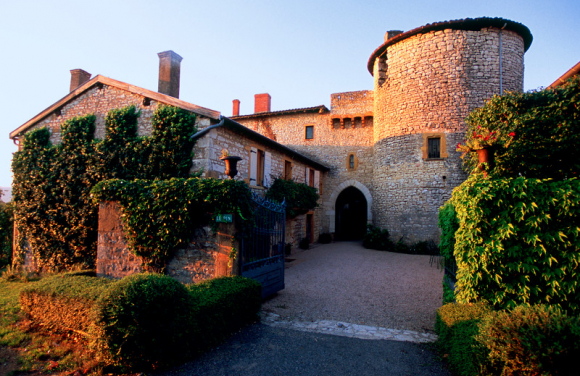
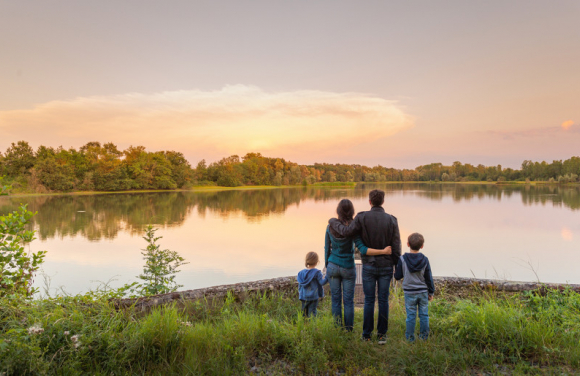
The Dombes & the medieval city of Pérouges
Between Bresse and Bugey, about thirty kilometres from Lyon, lies the landscape of the Dombes, the land of a thousand ponds. Famous for its traditional fishing ( which is possible to attend in autumn), the Dombes is France’s leading freshwater fish farming region. It is also famous for its carp, which appears on the menu of all good restaurants.
To the south-east of Villars-les-Dombes, the town of Pérouges dominates the Ain valley. This medieval town is indeed one of the "Most Beautiful Villages in France". Half-timbered facades, old stones and cobbled streets preserve the charm of the past. An excursion which redoubles in splendour during the famous music festival, the Printemps de Pérouges.





The rich soils of the Beaujolais
Elected as one of the "Towns or Countries of Art and History", the Beaujolais is appreciated for the quality of its vineyards, its golden stone villages and its emblematic landscapes. The exceptional character of its natural heritage and soils is the source of its wealth in all fields.
Recognised for its complex geology and unique biodiversity, the Beaujolais has been awarded the UNESCO World Geopark label since 2018.

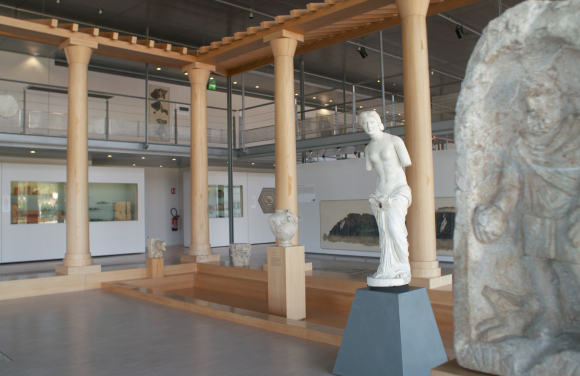


Vienne, ancient city, city of Jazz, a gourmet city
Located 30 minutes from Lyon, on the Nationale 7 on the banks of the Rhône, the city of Vienne imposes the magnificence of its ancient past. Near the exceptionally well-preserved Temple of Augustus and Livia, one of the greatest theatres of antiquity has become the main stage for the famous festival, Jazz à Vienne.
The city also enjoys a brilliant reputation in the world of gastronomy. Fernand Point, who runs a renowned restaurant in Vienne, was the first chef to be awarded three stars in the Michelin guide! This pioneer of gastronomy forged the city's destiny. The culinary art continues, with restaurants, delicatessens, craftspeople and markets honouring the region’s richness, its local specialities and its producers.





Saint-Etienne, the capital of design
Design is the DNA of Saint-Étienne! A major industrial centre in the 19th century (and home to the first railway line in France!) the city has always been a centre for creation, invention and innovation. Its inclusion in the UNESCO Creative Cities of Design network in 2010 confirms its historical calling.
The City of design, where the international Design Biennial is held (the next one in 2025), is the heart of a remarkable heritage that also includes the Museum of Modern and Contemporary Art, the Museum of Art and Industry and Le Corbusier’s architectural complex in Firminy. From 2024, this key site will contain the National Design Gallery, a first in France!
But visitors can also immerse themselves in the dynamism that animates the city by walking through the old town, discovering buildings and urban property, strolling through the streets, squares and cafés and immersing themselves in the experimental world of the Cabane du Design (350m² of open space that is free of charge to families and groups). A genuine workshop with its roots in the modern world and the reality of the 21st century!


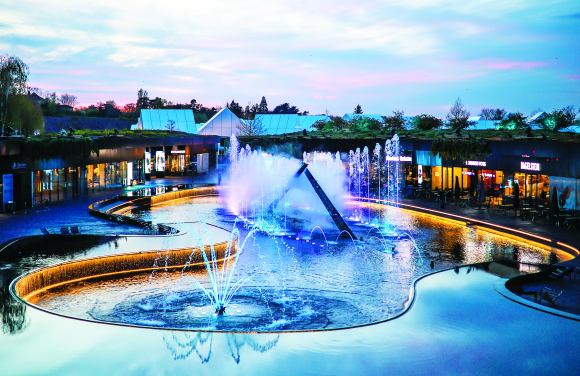

The Village, The French Outlet
France's second-largest outlet, "The Village" is a shopping paradise, a pleasure for good deals. Located only 30 minutes from Lyon, this temple of fashion and sports, design and cosmetics is a concentration of signatures and prestigious brands.
This attractive concept combines modern architecture with the comfort of little " bonuses ": from the 2,000-space car park to the pass, including photoshoots and tax-free offices. Not forgetting the restaurant services, particularly, the "Rendez-vous Bocuse Original Comptoir" which combines quality and simplicity.



Grand Hôtel-Dieu, a historic setting dedicated to the art of living
An emblematic monument of the peninsula, the Grand Hôtel-Dieu is today a place of life cultivating the art of living.
This successful reconversion welcomes the most beautiful brands. Fashion, wellness and design shops, restaurants and other food trades enliven this city centre. The Halles Grand Hôtel-Dieu have gathered their know-how and talents to become Lyon’s inhabitants’ gourmet meeting place.
The InterContinental Lyon- Hôtel Dieu, the right balance between basic pleasures and contemporary luxury, has also found its place here. Soufflot's imposing 32-metre high dome provides an unusual setting for the Dôme bar, an original place to sip a cocktail.



Painted walls, an important urban heritage
Numerous astonishing decorations in trompe l'oeil cover the facades of the Croix-Rousse and the quays of the Saône. These painted walls of Lyon can be read like a picture book. Talented artists have painted with realism and precision notable characters, events that marked the history of Lyon and even the life of the district. For example, the Canut wall painting, the largest painted wall in Europe, illustrates the life of the Croix-Rousse district and its evolution over the years.
On the Famous People from Lyon wall painting, passers-by can recognise portraits of Paul Bocuse, the Lumière brothers, Antoine de Saint Exupéry or Laurent Mourguet, the creator of Guignol.
Lyon is a real open-air painting gallery for the pleasure of the game and the viewing pleasure.

The Croix Rousse, the district of the Canuts
The Croix Rousse hill is the old silk district. This activity, which was the city’s glory for centuries, has left its mark on the memory. In the 19th century, all the slopes and the plateau lived to the rhythm of the weaving looms and thousands of workers, the canuts, brought this district to life.
To explore this part of Lyon's history, you have to walk around the neighbourhood and visit the Maison des Canuts. The museum's exhibition rooms and workshop illustrate the long history of Lyon's silk industry.
Thanks to its lively markets and terraces, the Croix-Rousse is a district of artists envied today for its quality of life.


Parc de la Tête d'Or, nature in the city
With its 117 hectares in the heart of Lyon, the Parc de la Tête d'Or is the largest urban park in France! Running along the banks of the Rhône, this vast landscaped area includes a lake, a zoo, a botanical garden and a rose garden.
A place for relaxation and leisure, for strolling, cycling, taking the little train or boat, the Parc de la Tête d'Or is for everyone a break in the green, a moment to breathe.


The Parc des oiseaux, an escape at the gates of Lyon
In the heart of the rich biodiversity of the Dombes, the Parc des oiseaux (bird park) covers 35 hectares. This renowned reserve in Villars les Dombes is home to no less than 300 species! Protecting, informing and raising awareness is the Park's mission.
It is the perfect place to observe birds and to appreciate the beauty of this wild nature. An observatory perched 27 m high allows you to look through binoculars or a camera into this unique environment.
Every day, a programme of activities, guided tours and shows offers visitors the chance to discover a whole new world of colours and feathers.





The villages of the Pierres dorées & Oingt
A short trip from Lyon takes visitors to the Beaujolais of the Pierres Dorées. The succession of villages from Châtillon to Theizé offers a never-ending show! Every day, as the hours go by, the light plays with the colour of the walls, the local limestone shines with all its warm ochre and reddish tones, giving this common aspect of "golden stone".
Among all these picturesque stages, the medieval village of Oingt, considered one of the Most Beautiful Villages in France, deserves its reputation. Overlooking the Azergues valley, the site offers an incredible 360° panorama over the vineyards.


Pilat regional national park
The Pilat regional national park is a real way to discover a change of scenery less than an hour from Lyon. From the Condrieu “region” on the right bank of the Rhône to the Monts du Pilat, 700km² of forests and medium-sized mountains combine the enjoyment of nature, sporting adventures and heritage discoveries.
Mountain bike circuits, hiking trails (including 3 GR®), horse riding tracks, climbing routes, several kilometres of cross-country ski paths and 3 Nordic areas make this mountainous area a vast region to explore all year round. With its slopes you can descend on a mountain scooter, its trail games and the 360° panoramic views, Pilat park is an unusual, fun and spectacular destination that will delight outdoor activity lovers.
This is also a land of flavours, (it produces the famous Pilat apple!) and of old stones. Classified as one of the “Most Beautiful Villages in France”, the site of Sainte-Croix-en-Jarez, a former Carthusian monastery dating from the 13th century is in itself worth a visit.




